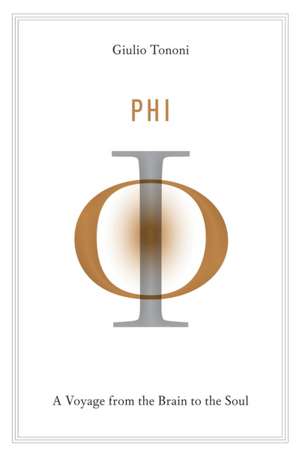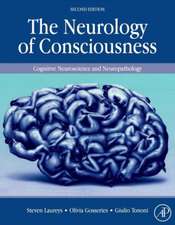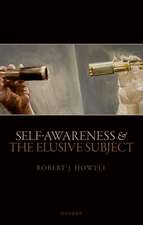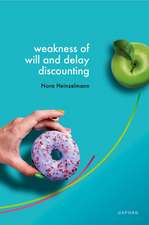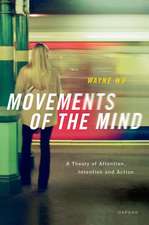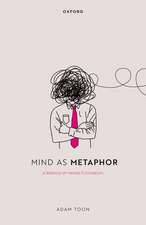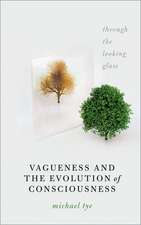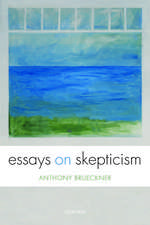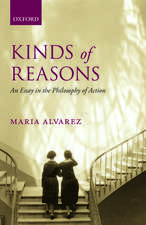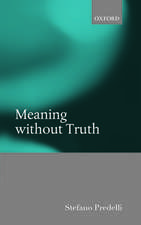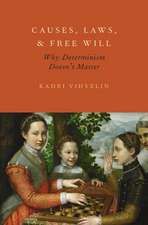Phi
Autor Giulio Tononien Limba Engleză Hardback – 13 sep 2012
From one of the most original and influential neuroscientists at work today, here is an exploration of consciousness unlike any other—as told by Galileo, who opened the way for the objectivity of science and is now intent on making subjective experience a part of science as well.
Galileo’s journey has three parts, each with a different guide. In the first, accompanied by a scientist who resembles Francis Crick, he learns why certain parts of the brain are important and not others, and why consciousness fades with sleep. In the second part, when his companion seems to be named Alturi (Galileo is hard of hearing; his companion’s name is actually Alan Turing), he sees how the facts assembled in the first part can be unified and understood through a scientific theory—a theory that links consciousness to the notion of integrated information (also known as phi). In the third part, accompanied by a bearded man who can only be Charles Darwin, he meditates on how consciousness is an evolving, developing, ever-deepening awareness of ourselves in history and culture—that it is everything we have and everything we are.
Not since Gödel, Escher, Bach has there been a book that interweaves science, art, and the imagination with such originality. This beautiful and arresting narrative will transform the way we think of ourselves and the world.
Preț: 195.77 lei
Preț vechi: 233.57 lei
-16% Nou
Puncte Express: 294
Preț estimativ în valută:
37.46€ • 39.22$ • 30.100£
37.46€ • 39.22$ • 30.100£
Carte disponibilă
Livrare economică 15-22 martie
Livrare express 04-08 martie pentru 101.85 lei
Preluare comenzi: 021 569.72.76
Specificații
ISBN-13: 9780307907219
ISBN-10: 030790721X
Pagini: 364
Ilustrații: 100 Colour and 100 Black and White Images
Dimensiuni: 163 x 241 x 30 mm
Greutate: 1.11 kg
Editura: Pantheon Books
ISBN-10: 030790721X
Pagini: 364
Ilustrații: 100 Colour and 100 Black and White Images
Dimensiuni: 163 x 241 x 30 mm
Greutate: 1.11 kg
Editura: Pantheon Books
Notă biografică
Giulio Tononi is a professor of psychiatry, the David P. White Professor of Sleep Medicine, and the Distinguished Chair in Consciousness Science at the University of Wisconsin. In addition to the major scientific journals, his work has appeared in New Scientist, Science Daily, and Scientific American. His research has been the subject of articles in The New York Times and The Economist. He is the coauthor, with Nobel laureate Gerald Edelman, of A Universe of Consciousness.
Extras
[Images were removed from this excerpt due to the technical restrictions of the website. The finished book offers vivid full-color illustrations throughout.]
Preface
Every night, when we fall into dreamless sleep, consciousness fades. With it fades everyone’s private universe—people and objects, colors and sounds, pleasures and pains, thoughts and feelings, even our own selves dissolve—until we awake, or until we dream.
What is consciousness, and what does it mean? How is it related to the world around us? What is it made of, and how is it generated inside the brain? Can science shed some light on it? Perhaps, but consciousness cannot just rest inside the shroud of science. Because consciousness is more than an object of science: it is its subject too.
What follows is a story where an old scientist, Galileo, goes through a journey in search of consciousness. In his time, Galileo removed the observer from nature and opened the way for the objectivity of science. Perhaps this is why Galileo is engaged to return the observer to nature, to make subjectivity a part of science. Or perhaps because Galileo was a master of thought experiments, of which this book makes much use.
During his journey, Galileo meets people from his and other times, learns many lessons, thinks many thoughts, and sometimes wonders, too, whether he is awake or dreaming. But each chapter makes some kind of statement, building on the previous ones, and Galileo’s understanding grows. So in the first part of the book, he learns the facts of consciousness and the brain—why certain parts of the brain are important but not others, or why consciousness fades with sleep. In the second part, he sees how these facts can be unified and understood through a scientific theory of consciousness—a theory that links consciousness to phi, the symbol of integrated information that gives the book its title. And finally, in the third part of the book, he realizes some of the theory’s implications, and sees that they concern us all, because consciousness is everything we have, and everything we are. Each experience, Galileo realizes, is a unique shape made of integrated information—a shape that is maximally irreducible—the shape of understanding. And it is the only shape that’s really real—the most real thing there is. The reader can judge whether the old man’s musings make any sense at all.
The notes at the end of each chapter attempt to clarify some ingredients of the main text and list credits when they could be identified. (Some pictures and quotes were liberally altered.) Those interested in a scientific exposition of a theory similar to the one presented in the main text can consult “Consciousness as Integrated Information,” Biological Bulletin (2008), and references therein. Several thoughts, images, and citations have appeared in previous work—it would seem that some people cannot help but write the same story all their life.
Prologue
1 The Dream of Galileo
Midway upon the journey of his dream,
he found himself adrift inside the dark,
not knowing whence or wherefore he was there.
He looked and saw that all was black. His soul was rising fast, or it was falling—Galileo knew not which way was up. So his soul turned and saw the stars. He saw the galaxies, fixed in their distant ways, and saw the planets, revolving in the indifferent void. The earth was moving, too, but there was no sun.
Yet dawn was coming. The earth painted itself like a faint half-moon, one face toward sunrise and one toward sunset. It loomed closer and closer—he could see the soft light of the morning sweep the ridges of the highest mountains, the shadows recede over the valleys. Soon the top of the tallest trees stared into the light, and amid the woods the monastery of his youth appeared—his own small turf of earth had come to meet its guest at his own place.
Hovering in midair, he slid inside his erstwhile room—a soul floating above his bed—and the soul saw himself: his eyes were closed, his mouth half open—it was an old man’s face. And yet the soul was light, unfastened from the frame of his own body.
His -b--o--d--y! He could see its letters,
entering (stage right), then floating full,
then heading -off—-so soon—
how like a little kohl-rimmed moon
o plots her course from b to d
—as y, unanswered, knocks at the stage door.
He put his ear to his own chest and listened to the heart. How could the pulse go on, beat after beat, for all of life? No machine could run that long without a stumble. Ask not if the beating cranks are going to jam, he thought, but when.
He heard his breath flow in and out. So for a while he watched the bellows puff and wheeze, in and out, and wondered how many puffs were left in him. Ask not, he thought, for far too soon the steam is going to fizzle—every balloon leaks.
Then, suddenly, straining to blow inside his body, the air took Galileo with it. And he felt his soul being sucked inward, flowing through narrow nostrils inside the dark vault of the skull.
Within he saw another sky: the black sky of his skull—there were no stars in it. But his soul turned again and saw another earth. Floating over its vast continents, he saw its mountains and soared above its valleys. Another dawn was rising: the ridges and the valleys were lined with forests, perhaps they were the trees of youth, the shady valley where he had once learned what nature was and what the soul was not. The smell of youth wafting through the air, the rounded mountains were breathing, too, beating slowly and softly with his pulse. And he saw then what it was, the expanse below his soul: it was the brain, the brain that shone with light as if it held its sun inside.
Then he landed and dived into the brain, amongst its trees, under the canopy, and deep inside the brain he saw his monastery again, and the long row of cells; once more he saw his room, of when he was a boy, and saw himself in bed—next to his bed the lute, and it began to play: he knew its sound and song. The brain was wider than the sky.
But then he thought: Inside that boy, too, was a brain, a brain that would contain another universe, the green expanding universe of his youth, and within that universe were other boys, and other brains, each with its lute and with its rising sun. The sky contained a billion brains, he thought, every living brain was like a burning star.
And yet each brain was just a trifle in the vast furniture of the world—a quivering jelly fitting inside a cup of bone, a tiny loaf covered by a hat, a poor sponge soaked with just a glass of wine—a fist enough to break it. How could a brain contain the sky?
The brain painted the world with color, he once had thought, made it alive with sound, and gave it taste and smell, but now he felt the brain did more than paint: the brain dreamed up and forged all things that were—lutes, rooms, mountains planets and stars.
My brain gives birth to what is real, he thought, to the bloom of the bulrush, the flakes of the pinecone, to the berry of the juniper. It gives birth to the drone bee, the sea grass, to every object large and small, to the meadow nearby, and to the distant peaks. It burns, it glitters. And it has no name. It has no name but I.
He thought: What is, is what can be perceived. Reality is only made of pure experience. The brain can hold the sky because it can beget the soul, and when a soul is born, a universe is delivered.
But then he knew nothing was gained—for how could the brain generate the soul? A woman can beget a child, and that was wondrous enough. But the child’s brain was the true father of the soul, the one who could engender consciousness, giving birth to it every time it woke, or every time it dreamed. Flesh could give rise to flesh, an earthly embrace could grow new seeds, it was a marvel, but it was not a miracle. How could mere matter generate mind? It was a mystery, stranger than an immaculate conception, an impossibility that defied belief. Perhaps there was a special part of the brain, an inner sanctum where consciousness’s conception was celebrated. Perhaps there was a pivot point where transubstantiation could transpire, not from bread to body, but from brain to soul.
Perhaps, but Galileo’s thoughts lost wind and stalled in midflight: for his was an old brain now, gray like his hair. What would befall his world when his brain was put to rest? When the light was off inside his head, would darkness take along his friends, his house and country? Would his memories be lost forever—would everyone and everything vanish—would all be lost? If all was born and buried somewhere in the brain, then when the brain would die, the universe would vanish too.
Galileo’s spirit had sunk, but then he heard a distant choir, and in the dream it seemed to speak to him:
“Dull is the brain, its center thin, and shadows only come together there; but the soul, the soul wants more than just a place to -dwell—-the soul is not a point at all.”
So Galileo took breeze again. Perhaps the choir was right, perhaps the soul is just a guest in the dark palace of the brain, a guest who only spends a few nights there, a wanderer who does not wish to settle, but like a gypsy roams without constraint, free soul with a free will, not subject to the mechanism of matter.
And then he heard a voice. “Only what is unhinged is free,” said the voice. “You hope to find freedom’s lost keys among the chains and locks that lie entangled in the brain? You hope you can distill an insubstantial soul from the foul sewage that rots inside the skull?”
The voice came from a wooden chair that hung from a gigantic scale. Who was the man in the chair, holding a thermometer and a pendulum in his hands? And then it occurred to Galileo: it was Sanctorius, the doctor who spent his life on the scale, thinking all could be weighed, and all should be; Sanctorius, who had borrowed Galileo’s instruments to measure, not the sky and its celestial bodies, but the human body and all its earthly fluids; Sanctorius, who, weighing all that goes into a man and all that leaves him, discovered that something was missing from the balance—the warm vapors of the body, which unaccounted, silently, unknown to us, steam out of the pores of the skin, and leave the body dry. Perhaps Sanctorius had discovered the soul, thought Galileo.
But from his hanging chair Sanctorius laughed. “You wish to know what the soul truly is? Only by measuring can it be known,” he said, “and I have measured all my life. So I will tell you what I found.” Sanctorius laughed again. “Three men and women I weighed with my scale, just before death and after the soul expired. But no, their weight did not diminish, not by the least amount—nothing ever left the body, not even a ghost of vapor. There is no room for the soul in any place on earth. There is no soul, Galileo there is only the body—and the body is an old greasy machine.”
From nowhere, the choir resounded again:
“Light is the soul, and hard to find, hides in the brain as if it were a Naught; ah, the soul, the soul must be the weight of God—the soul is just no weight at all.”
***
NOTES
There is no report of this confused dream in Galileo’s papers—most likely it was made up by the author. That would explain the quote from James Merrill’s “b o d y” a couple of references to Emily Dickinson’s much-abused “The Brain,” and one to Gabriele D’Annunzio’s “Meriggio.” Regardless, like most dreams this one is a mixture of past and present, of the familiar and the uncanny; the scene shifts suddenly, thought follows loose associations, and people and voices (Sanctorius and the choir) appear seemingly out of nowhere. The feeling of flying or floating is common in dreams, though Galileo’s account at times seems like a near-death experience: the out-of-body aspects and the sense of entering a region of utter darkness are telling signs. Perhaps Galileo had a brief cardiac arrest: both flying dreams and out-of-body experiences are due to insufficient blood to a region of the brain underneath the temple.
The main preoccupation underlying Galileo’s dream is clear enough: Does consciousness (which is to say the soul, since dreams make no fine distinctions) spring out of the matter of the brain, and how? Just as clearly, Galileo has no clue. In a famous passage of The Assayer, he had written: “Concerning sensation and the things that pertain to it I claim to understand but little . . . therefore I leave it unsaid.” Having recognized his ignorance of subjective properties, Galileo wisely chose to study the objective properties of bodies. That is why Galileo is often credited with having eliminated subjectivity from the study of nature, replacing it with mathematics and measurement. In the dream, however, he seems of two minds: Is consciousness generated by the brain (and how on earth can the brain do it), or does it exist as a disembodied soul? In The Assayer, Galileo had drawn a famous distinction between objective and subjective properties of bodies: “If ears, tongues, and noses were removed, I am of the opinion that shape, quantity, and motion would remain, but there would be an end of smells, tastes, and sounds.” But in the dream Galileo, like Berkeley and Kant after him, begins to wonder whether the so-called objective qualities—the entire universe, indeed—aren’t also a product of consciousness. Not surprisingly, he seems to be of two minds on this issue, too.
As for the pictures, Comet Hale-Bopp was seen from the Space Shuttle Columbia. The 1999 total solar eclipse in France was photographed by Luc Viatour (www.Lucnix.be). The view of the abbey at Vallombrosa, where Galileo studied and played the lute (The Lute Player by Caravaggio is at the Hermitage, St. Petersburg), is by Louis Gauffier (Musée Fabre, Montpellier). The Soul Hovering over the Body is by William Blake (Tate Collection, London). The chest and nostrils are of Mantegna’s Dead Christ. The vanitas still life (with a subtle change) is by Pieter Boel (Musée des Beaux-Arts, Lille). The cupola of the Sagrestia Vecchia in Florence is attributed to Pesello. The portrait of Galileo as an old man is by Justus Sustermans (Palazzo Pitti, Florence). Sanctorius Sanctorius taught theoretical medicine at Padua, where he met Galileo. He adapted the pendulum to measure pulse rate and invented the clinical thermometer. Living on his scale for many years, he did discover perspiratio -insensibilis—-the evaporation of water from the skin. The illustration of Sanctorius in his steelyard chair, about to weigh himself, is from his De statica medicina (1614). In the early 1900s an American doctor, Duncan MacDougall, weighed six dying patients on a scale not unlike Sanctorius’s, just before and after the moment of death. He claimed to have proven scientifically that the soul exists and is measurable. He repeated his observations in dying dogs and found that their weight, by contrast, did not change.
[Images were removed from this excerpt due to the technical restrictions of the website. The finished book offers vivid full-color illustrations throughout.]
Preface
Every night, when we fall into dreamless sleep, consciousness fades. With it fades everyone’s private universe—people and objects, colors and sounds, pleasures and pains, thoughts and feelings, even our own selves dissolve—until we awake, or until we dream.
What is consciousness, and what does it mean? How is it related to the world around us? What is it made of, and how is it generated inside the brain? Can science shed some light on it? Perhaps, but consciousness cannot just rest inside the shroud of science. Because consciousness is more than an object of science: it is its subject too.
What follows is a story where an old scientist, Galileo, goes through a journey in search of consciousness. In his time, Galileo removed the observer from nature and opened the way for the objectivity of science. Perhaps this is why Galileo is engaged to return the observer to nature, to make subjectivity a part of science. Or perhaps because Galileo was a master of thought experiments, of which this book makes much use.
During his journey, Galileo meets people from his and other times, learns many lessons, thinks many thoughts, and sometimes wonders, too, whether he is awake or dreaming. But each chapter makes some kind of statement, building on the previous ones, and Galileo’s understanding grows. So in the first part of the book, he learns the facts of consciousness and the brain—why certain parts of the brain are important but not others, or why consciousness fades with sleep. In the second part, he sees how these facts can be unified and understood through a scientific theory of consciousness—a theory that links consciousness to phi, the symbol of integrated information that gives the book its title. And finally, in the third part of the book, he realizes some of the theory’s implications, and sees that they concern us all, because consciousness is everything we have, and everything we are. Each experience, Galileo realizes, is a unique shape made of integrated information—a shape that is maximally irreducible—the shape of understanding. And it is the only shape that’s really real—the most real thing there is. The reader can judge whether the old man’s musings make any sense at all.
The notes at the end of each chapter attempt to clarify some ingredients of the main text and list credits when they could be identified. (Some pictures and quotes were liberally altered.) Those interested in a scientific exposition of a theory similar to the one presented in the main text can consult “Consciousness as Integrated Information,” Biological Bulletin (2008), and references therein. Several thoughts, images, and citations have appeared in previous work—it would seem that some people cannot help but write the same story all their life.
Prologue
1 The Dream of Galileo
Midway upon the journey of his dream,
he found himself adrift inside the dark,
not knowing whence or wherefore he was there.
He looked and saw that all was black. His soul was rising fast, or it was falling—Galileo knew not which way was up. So his soul turned and saw the stars. He saw the galaxies, fixed in their distant ways, and saw the planets, revolving in the indifferent void. The earth was moving, too, but there was no sun.
Yet dawn was coming. The earth painted itself like a faint half-moon, one face toward sunrise and one toward sunset. It loomed closer and closer—he could see the soft light of the morning sweep the ridges of the highest mountains, the shadows recede over the valleys. Soon the top of the tallest trees stared into the light, and amid the woods the monastery of his youth appeared—his own small turf of earth had come to meet its guest at his own place.
Hovering in midair, he slid inside his erstwhile room—a soul floating above his bed—and the soul saw himself: his eyes were closed, his mouth half open—it was an old man’s face. And yet the soul was light, unfastened from the frame of his own body.
His -b--o--d--y! He could see its letters,
entering (stage right), then floating full,
then heading -off—-so soon—
how like a little kohl-rimmed moon
o plots her course from b to d
—as y, unanswered, knocks at the stage door.
He put his ear to his own chest and listened to the heart. How could the pulse go on, beat after beat, for all of life? No machine could run that long without a stumble. Ask not if the beating cranks are going to jam, he thought, but when.
He heard his breath flow in and out. So for a while he watched the bellows puff and wheeze, in and out, and wondered how many puffs were left in him. Ask not, he thought, for far too soon the steam is going to fizzle—every balloon leaks.
Then, suddenly, straining to blow inside his body, the air took Galileo with it. And he felt his soul being sucked inward, flowing through narrow nostrils inside the dark vault of the skull.
Within he saw another sky: the black sky of his skull—there were no stars in it. But his soul turned again and saw another earth. Floating over its vast continents, he saw its mountains and soared above its valleys. Another dawn was rising: the ridges and the valleys were lined with forests, perhaps they were the trees of youth, the shady valley where he had once learned what nature was and what the soul was not. The smell of youth wafting through the air, the rounded mountains were breathing, too, beating slowly and softly with his pulse. And he saw then what it was, the expanse below his soul: it was the brain, the brain that shone with light as if it held its sun inside.
Then he landed and dived into the brain, amongst its trees, under the canopy, and deep inside the brain he saw his monastery again, and the long row of cells; once more he saw his room, of when he was a boy, and saw himself in bed—next to his bed the lute, and it began to play: he knew its sound and song. The brain was wider than the sky.
But then he thought: Inside that boy, too, was a brain, a brain that would contain another universe, the green expanding universe of his youth, and within that universe were other boys, and other brains, each with its lute and with its rising sun. The sky contained a billion brains, he thought, every living brain was like a burning star.
And yet each brain was just a trifle in the vast furniture of the world—a quivering jelly fitting inside a cup of bone, a tiny loaf covered by a hat, a poor sponge soaked with just a glass of wine—a fist enough to break it. How could a brain contain the sky?
The brain painted the world with color, he once had thought, made it alive with sound, and gave it taste and smell, but now he felt the brain did more than paint: the brain dreamed up and forged all things that were—lutes, rooms, mountains planets and stars.
My brain gives birth to what is real, he thought, to the bloom of the bulrush, the flakes of the pinecone, to the berry of the juniper. It gives birth to the drone bee, the sea grass, to every object large and small, to the meadow nearby, and to the distant peaks. It burns, it glitters. And it has no name. It has no name but I.
He thought: What is, is what can be perceived. Reality is only made of pure experience. The brain can hold the sky because it can beget the soul, and when a soul is born, a universe is delivered.
But then he knew nothing was gained—for how could the brain generate the soul? A woman can beget a child, and that was wondrous enough. But the child’s brain was the true father of the soul, the one who could engender consciousness, giving birth to it every time it woke, or every time it dreamed. Flesh could give rise to flesh, an earthly embrace could grow new seeds, it was a marvel, but it was not a miracle. How could mere matter generate mind? It was a mystery, stranger than an immaculate conception, an impossibility that defied belief. Perhaps there was a special part of the brain, an inner sanctum where consciousness’s conception was celebrated. Perhaps there was a pivot point where transubstantiation could transpire, not from bread to body, but from brain to soul.
Perhaps, but Galileo’s thoughts lost wind and stalled in midflight: for his was an old brain now, gray like his hair. What would befall his world when his brain was put to rest? When the light was off inside his head, would darkness take along his friends, his house and country? Would his memories be lost forever—would everyone and everything vanish—would all be lost? If all was born and buried somewhere in the brain, then when the brain would die, the universe would vanish too.
Galileo’s spirit had sunk, but then he heard a distant choir, and in the dream it seemed to speak to him:
“Dull is the brain, its center thin, and shadows only come together there; but the soul, the soul wants more than just a place to -dwell—-the soul is not a point at all.”
So Galileo took breeze again. Perhaps the choir was right, perhaps the soul is just a guest in the dark palace of the brain, a guest who only spends a few nights there, a wanderer who does not wish to settle, but like a gypsy roams without constraint, free soul with a free will, not subject to the mechanism of matter.
And then he heard a voice. “Only what is unhinged is free,” said the voice. “You hope to find freedom’s lost keys among the chains and locks that lie entangled in the brain? You hope you can distill an insubstantial soul from the foul sewage that rots inside the skull?”
The voice came from a wooden chair that hung from a gigantic scale. Who was the man in the chair, holding a thermometer and a pendulum in his hands? And then it occurred to Galileo: it was Sanctorius, the doctor who spent his life on the scale, thinking all could be weighed, and all should be; Sanctorius, who had borrowed Galileo’s instruments to measure, not the sky and its celestial bodies, but the human body and all its earthly fluids; Sanctorius, who, weighing all that goes into a man and all that leaves him, discovered that something was missing from the balance—the warm vapors of the body, which unaccounted, silently, unknown to us, steam out of the pores of the skin, and leave the body dry. Perhaps Sanctorius had discovered the soul, thought Galileo.
But from his hanging chair Sanctorius laughed. “You wish to know what the soul truly is? Only by measuring can it be known,” he said, “and I have measured all my life. So I will tell you what I found.” Sanctorius laughed again. “Three men and women I weighed with my scale, just before death and after the soul expired. But no, their weight did not diminish, not by the least amount—nothing ever left the body, not even a ghost of vapor. There is no room for the soul in any place on earth. There is no soul, Galileo there is only the body—and the body is an old greasy machine.”
From nowhere, the choir resounded again:
“Light is the soul, and hard to find, hides in the brain as if it were a Naught; ah, the soul, the soul must be the weight of God—the soul is just no weight at all.”
***
NOTES
There is no report of this confused dream in Galileo’s papers—most likely it was made up by the author. That would explain the quote from James Merrill’s “b o d y” a couple of references to Emily Dickinson’s much-abused “The Brain,” and one to Gabriele D’Annunzio’s “Meriggio.” Regardless, like most dreams this one is a mixture of past and present, of the familiar and the uncanny; the scene shifts suddenly, thought follows loose associations, and people and voices (Sanctorius and the choir) appear seemingly out of nowhere. The feeling of flying or floating is common in dreams, though Galileo’s account at times seems like a near-death experience: the out-of-body aspects and the sense of entering a region of utter darkness are telling signs. Perhaps Galileo had a brief cardiac arrest: both flying dreams and out-of-body experiences are due to insufficient blood to a region of the brain underneath the temple.
The main preoccupation underlying Galileo’s dream is clear enough: Does consciousness (which is to say the soul, since dreams make no fine distinctions) spring out of the matter of the brain, and how? Just as clearly, Galileo has no clue. In a famous passage of The Assayer, he had written: “Concerning sensation and the things that pertain to it I claim to understand but little . . . therefore I leave it unsaid.” Having recognized his ignorance of subjective properties, Galileo wisely chose to study the objective properties of bodies. That is why Galileo is often credited with having eliminated subjectivity from the study of nature, replacing it with mathematics and measurement. In the dream, however, he seems of two minds: Is consciousness generated by the brain (and how on earth can the brain do it), or does it exist as a disembodied soul? In The Assayer, Galileo had drawn a famous distinction between objective and subjective properties of bodies: “If ears, tongues, and noses were removed, I am of the opinion that shape, quantity, and motion would remain, but there would be an end of smells, tastes, and sounds.” But in the dream Galileo, like Berkeley and Kant after him, begins to wonder whether the so-called objective qualities—the entire universe, indeed—aren’t also a product of consciousness. Not surprisingly, he seems to be of two minds on this issue, too.
As for the pictures, Comet Hale-Bopp was seen from the Space Shuttle Columbia. The 1999 total solar eclipse in France was photographed by Luc Viatour (www.Lucnix.be). The view of the abbey at Vallombrosa, where Galileo studied and played the lute (The Lute Player by Caravaggio is at the Hermitage, St. Petersburg), is by Louis Gauffier (Musée Fabre, Montpellier). The Soul Hovering over the Body is by William Blake (Tate Collection, London). The chest and nostrils are of Mantegna’s Dead Christ. The vanitas still life (with a subtle change) is by Pieter Boel (Musée des Beaux-Arts, Lille). The cupola of the Sagrestia Vecchia in Florence is attributed to Pesello. The portrait of Galileo as an old man is by Justus Sustermans (Palazzo Pitti, Florence). Sanctorius Sanctorius taught theoretical medicine at Padua, where he met Galileo. He adapted the pendulum to measure pulse rate and invented the clinical thermometer. Living on his scale for many years, he did discover perspiratio -insensibilis—-the evaporation of water from the skin. The illustration of Sanctorius in his steelyard chair, about to weigh himself, is from his De statica medicina (1614). In the early 1900s an American doctor, Duncan MacDougall, weighed six dying patients on a scale not unlike Sanctorius’s, just before and after the moment of death. He claimed to have proven scientifically that the soul exists and is measurable. He repeated his observations in dying dogs and found that their weight, by contrast, did not change.
[Images were removed from this excerpt due to the technical restrictions of the website. The finished book offers vivid full-color illustrations throughout.]
Recenzii
“Both playful and philosophical, this extravagant book addresses questions about the root of consciousness in a unique way...The book is a visual delight as well as an impressive read, its lavish artwork and literary references demonstrating just how fully complementary art and science can be.”
—Publishers Weekly, starred review
“Giulio Tononi is a man of bold and original mind who has developed a fundamental new theory of consciousness. In Phi, he calls on all the resources of drama, metaphor, and the visual arts to present his scientific insights, in the form of imaginary dialogues in which Galileo meets Francis Crick, Alan Turing, and other major thinkers of the twentieth century. This is an astonishing (and risky) literary device, but Tononi pulls it off triumphantly. He makes the deepest neuroscientific insights come alive.”
—Oliver Sacks, author of Musicophilia
“You may or may not endorse Giulio Tononi’s views on how the brain generates consciousness, but you can certainly agree that his book is a garden of intellectual delights.”
—Antonio Damasio, author of Self Comes to Mind and Descartes’ Error
“This wonderful book reads like a popcorn novel but informs like a primer on consciousness and where it comes from. By turns exciting, challenging, and thought provoking, Giulio Tononi’s marvelous imagination explores the origin of thought, sensation, and feeling. Learning about the difference between the cerebrum and the cerebellum doesn’t sound like fun, but here you encounter them amidst fat friars shouting in vulgar Latin, nymphs of radiant beauty, and a mysterious juggler on a unicycle. I’ve always taken pride in being a conscious, sentient being; after reading Phi, I’m beginning to understand what it means when I say that!”
—Leonard Mlodinow, author of Subliminal
“An original, provocative tale of a scientist’s quest to understand how the brain generates consciousness…A challenging, rewarding read that will undoubtedly alter your consciousness.” ߝKirkus
“Charming.” ߝCultureLab
“Tononi has pushed the study of consciousness forward…the book is lavishly illustrated with paintings and scientific images, poetically written, and unashamedly speculative, weighing some of the ‘meaning of life’ questions Tononi has been thinking about during his long career as a consciousness researcher. It’s a fascinating celebration of the complexity of the brain and mind.” ߝBoston Globe
—Publishers Weekly, starred review
“Giulio Tononi is a man of bold and original mind who has developed a fundamental new theory of consciousness. In Phi, he calls on all the resources of drama, metaphor, and the visual arts to present his scientific insights, in the form of imaginary dialogues in which Galileo meets Francis Crick, Alan Turing, and other major thinkers of the twentieth century. This is an astonishing (and risky) literary device, but Tononi pulls it off triumphantly. He makes the deepest neuroscientific insights come alive.”
—Oliver Sacks, author of Musicophilia
“You may or may not endorse Giulio Tononi’s views on how the brain generates consciousness, but you can certainly agree that his book is a garden of intellectual delights.”
—Antonio Damasio, author of Self Comes to Mind and Descartes’ Error
“This wonderful book reads like a popcorn novel but informs like a primer on consciousness and where it comes from. By turns exciting, challenging, and thought provoking, Giulio Tononi’s marvelous imagination explores the origin of thought, sensation, and feeling. Learning about the difference between the cerebrum and the cerebellum doesn’t sound like fun, but here you encounter them amidst fat friars shouting in vulgar Latin, nymphs of radiant beauty, and a mysterious juggler on a unicycle. I’ve always taken pride in being a conscious, sentient being; after reading Phi, I’m beginning to understand what it means when I say that!”
—Leonard Mlodinow, author of Subliminal
“An original, provocative tale of a scientist’s quest to understand how the brain generates consciousness…A challenging, rewarding read that will undoubtedly alter your consciousness.” ߝKirkus
“Charming.” ߝCultureLab
“Tononi has pushed the study of consciousness forward…the book is lavishly illustrated with paintings and scientific images, poetically written, and unashamedly speculative, weighing some of the ‘meaning of life’ questions Tononi has been thinking about during his long career as a consciousness researcher. It’s a fascinating celebration of the complexity of the brain and mind.” ߝBoston Globe
Cuprins
CONTENTS
Preface
Prologue
1 The Dream of Galileo
Part I: EVIDENCE: Experiments of Nature
2 Introduction
Displacements
3 Cerebrum
In which is shown that the corticothalamic system generates consciousness
4 Cerebellum
In which is shown that the cerebellum, while having more neurons than the cerebrum, does not generate consciousness
5 Two Blind Painters
In which is shown that sensory inputs and pathways are not necessary for consciousness
6 A Brain Locked In
In which is shown that motor outputs and pathways are not necessary for consciousness, nor are they sufficient
7 Empress Without Memory
In which is shown that many brain circuits that help us see, hear, remember, speak, and act are not necessary for consciousness
8 A Brain Split
In which is shown that consciousness is divided if the brain is split
9 A Brain Conflicted
In which is said that consciousness can split if different regions of the brain refuse to talk to each other
10 A Brain Possessed
In which is shown that when cortical neurons fire strongly and synchronously, as during certain seizures, consciousness fades
11 A Brain Asleep
In which is shown that when cortical neurons can be on and off only together, as during dreamless sleep, consciousness fades
Part II: THEORY: Experiments of Thought
12 Introduction
The Enigma of Consciousness
13 Galileo and the Photodiode
In which is shown that the humble photodiode can tell light from dark as well as Galileo
14 Information: The Manifold Repertoire
In which is shown that the repertoire of possible experiences is as large as one can imagine
15 Galileo and the Camera
In which is shown that the sensor of a digital camera has a large repertoire of possible states, perhaps larger than Galileo’s
16 Integrated Information: The Many and the One
In which is shown that consciousness lives where information is integrated by a single entity above and beyond its parts
17 Galileo and the Bat
In which is feared that the quality of experience cannot be derived from matter
18 Seeing Dark (Deconstructing Darkness)
In which is said that darkness does not exist in a void but requires a context
19 The Meaning of Dark (Constructing Darkness)
In which is shown that darkness is built of many nested mechanisms that specify what it is not
20 The Palace of Light
In which is shown that an experience is a shape made of integrated information
21 The Garden of Qualia
In which is said that the universe is mostly dark, but the largest stars are closer than one thinks, if they are looked at with the proper instrument
Part III: IMPLICATIONS: A Universe of Consciousness
22 Introduction
Sparks and Flames
23 Nightfall I: Death
In which is said that, if consciousness is integrated information, it dissolves with death
24 Nightfall II: Dementia
In which is said that consciousness disintegrates with dementia
25 Nightfall III: Dolor
In which is said that, if the quality of consciousness is a shape made of integrated information, it can be turned into the only real and eternal Hell
26 Twilight I: Consciousness Diminished
In which is said that consciousness can be present in the absence of language and reflection
27 Twilight II: Consciousness Evolving
In which is said that animals are conscious, too
28 Twilight III: Consciousness Developing
In which is said that consciousness must be present, to some degree, even before birth
29 Daylight I: Consciousness Exploring
In which is said that, by investigating nature, new qualia are discovered
30 Daylight II: Consciousness Imagining
In which is said that art and imagination invent new shapes within the mind
31 Daylight III: Consciousness Growing
In which is said that, by growing consciousness, the universe comes more into being, the synthesis of one and many
32 Epilogue
Three Late Dreams
33 Afterthoughts
Study Questions
Acknowledgments
Illustration Credits
Preface
Prologue
1 The Dream of Galileo
Part I: EVIDENCE: Experiments of Nature
2 Introduction
Displacements
3 Cerebrum
In which is shown that the corticothalamic system generates consciousness
4 Cerebellum
In which is shown that the cerebellum, while having more neurons than the cerebrum, does not generate consciousness
5 Two Blind Painters
In which is shown that sensory inputs and pathways are not necessary for consciousness
6 A Brain Locked In
In which is shown that motor outputs and pathways are not necessary for consciousness, nor are they sufficient
7 Empress Without Memory
In which is shown that many brain circuits that help us see, hear, remember, speak, and act are not necessary for consciousness
8 A Brain Split
In which is shown that consciousness is divided if the brain is split
9 A Brain Conflicted
In which is said that consciousness can split if different regions of the brain refuse to talk to each other
10 A Brain Possessed
In which is shown that when cortical neurons fire strongly and synchronously, as during certain seizures, consciousness fades
11 A Brain Asleep
In which is shown that when cortical neurons can be on and off only together, as during dreamless sleep, consciousness fades
Part II: THEORY: Experiments of Thought
12 Introduction
The Enigma of Consciousness
13 Galileo and the Photodiode
In which is shown that the humble photodiode can tell light from dark as well as Galileo
14 Information: The Manifold Repertoire
In which is shown that the repertoire of possible experiences is as large as one can imagine
15 Galileo and the Camera
In which is shown that the sensor of a digital camera has a large repertoire of possible states, perhaps larger than Galileo’s
16 Integrated Information: The Many and the One
In which is shown that consciousness lives where information is integrated by a single entity above and beyond its parts
17 Galileo and the Bat
In which is feared that the quality of experience cannot be derived from matter
18 Seeing Dark (Deconstructing Darkness)
In which is said that darkness does not exist in a void but requires a context
19 The Meaning of Dark (Constructing Darkness)
In which is shown that darkness is built of many nested mechanisms that specify what it is not
20 The Palace of Light
In which is shown that an experience is a shape made of integrated information
21 The Garden of Qualia
In which is said that the universe is mostly dark, but the largest stars are closer than one thinks, if they are looked at with the proper instrument
Part III: IMPLICATIONS: A Universe of Consciousness
22 Introduction
Sparks and Flames
23 Nightfall I: Death
In which is said that, if consciousness is integrated information, it dissolves with death
24 Nightfall II: Dementia
In which is said that consciousness disintegrates with dementia
25 Nightfall III: Dolor
In which is said that, if the quality of consciousness is a shape made of integrated information, it can be turned into the only real and eternal Hell
26 Twilight I: Consciousness Diminished
In which is said that consciousness can be present in the absence of language and reflection
27 Twilight II: Consciousness Evolving
In which is said that animals are conscious, too
28 Twilight III: Consciousness Developing
In which is said that consciousness must be present, to some degree, even before birth
29 Daylight I: Consciousness Exploring
In which is said that, by investigating nature, new qualia are discovered
30 Daylight II: Consciousness Imagining
In which is said that art and imagination invent new shapes within the mind
31 Daylight III: Consciousness Growing
In which is said that, by growing consciousness, the universe comes more into being, the synthesis of one and many
32 Epilogue
Three Late Dreams
33 Afterthoughts
Study Questions
Acknowledgments
Illustration Credits
Descriere
From one of the most original and influential neuroscientists at work today, an exploration of consciousness unlike any other: the latest science framed in a dazzlingly imaginative, lavishly illustrated narrative.
